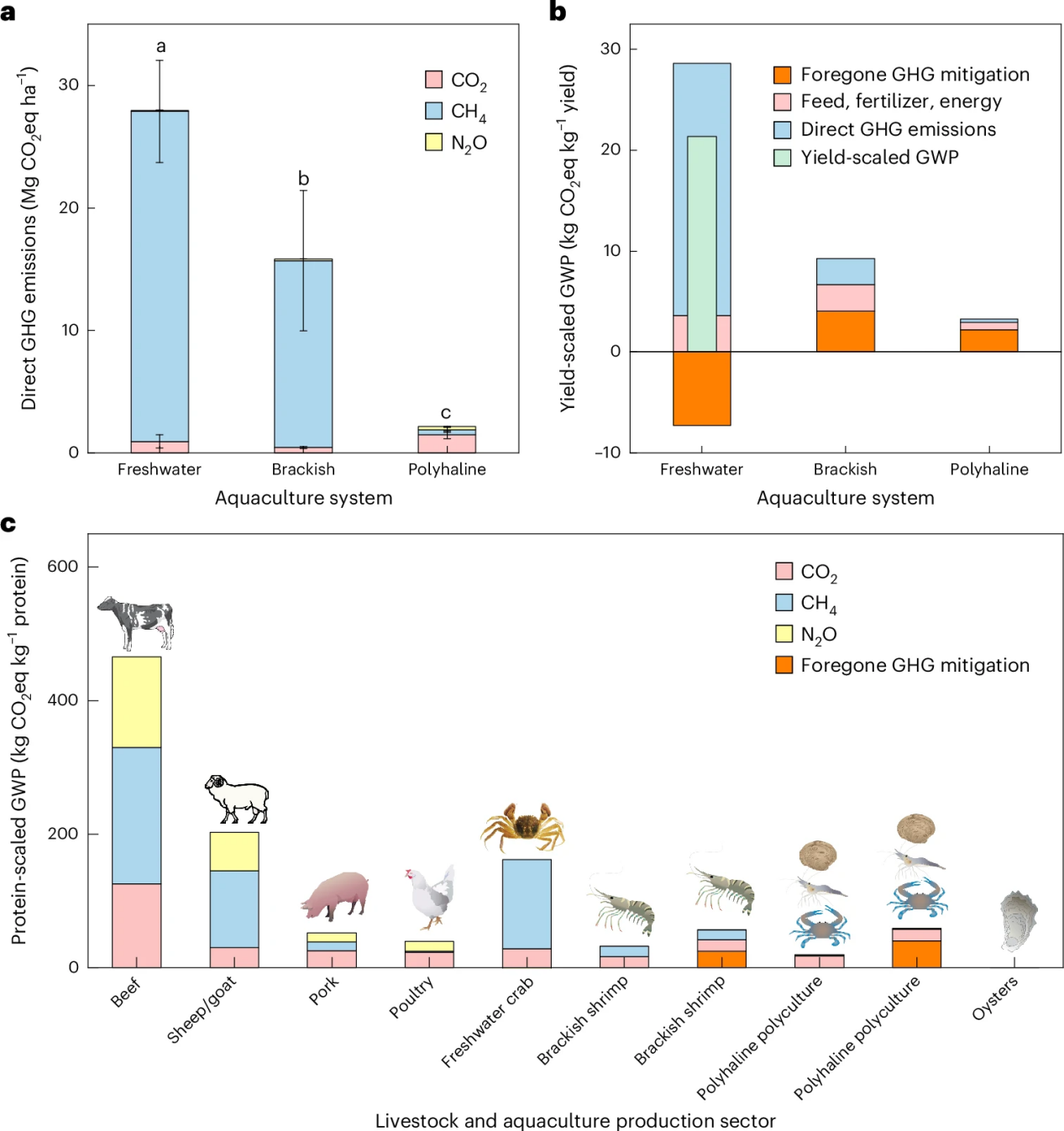
Coastal wetlands offer large carbon sequestration benefits but their conversion to aquaculture systems could result in substantial carbon losses. Here Prof. DING Weixin and his team show that the conversion of Spartina alterniflora salt marsh to mariculture ponds in China generated a greenhouse gas (GHG) footprint of 20.3 Mg CO2 equivalent per ha per year. Around two-thirds of the footprint can be attributed to foregone salt marsh GHG mitigation capacity, whereas direct carbon dioxide, methane and nitrous oxide emissions in mariculture ponds account for only ~10%, with the remaining ~20% arising from feed, fertilizer and energy consumption. Aquaculture can offer comparatively lower GHG footprints than other animal protein sources, such as terrestrial beef and small ruminants’ production on a kg CO2 equivalent per kg protein basis, but this assumption may not be accurate when considering landscape-scale changes in GHG budgets, particularly in relation to the expansion of aquaculture within blue carbon ecosystems.
This study published in Nature Food in April.

Values show the GHG footprint arising from changes in direct ecosystem–atmosphere GHG exchange associated with salt marsh conversion and feed, fertilizer and energy consumption in mariculture; units are Mg CO2eq ha–1 yr–1.

a–c, GWP of direct CO2, CH4 and N2O emissions (a), yield-scaled GWP (b) and protein-scaled GWP (c) in aquaculture systems and terrestrial livestock production sectors.
Attachment Download: